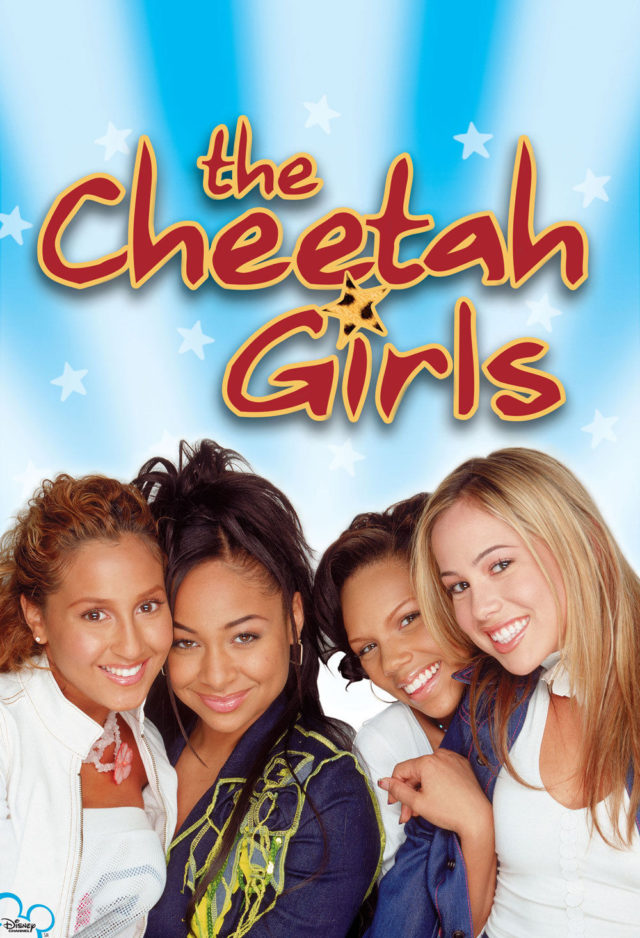Savannah Cooper | Reporter
What differentiates a cult film from the countless other movies released from Hollywood every year? Why do these movies stand the test of time and, more importantly, maintain fervent multi-generational followers? In this series, Cult Film Crash Course, I will attempt to answer these questions about cult film qualities and more.
In August 2003, over 6 million people, from school-aged kids to young adults, tuned in to Disney Channel to watch the premiere of its newest original movie. This film would become an instant classic that not only resonated with viewers across the country, but all around the world. Based off of Deborah Gregory’s novel series, “The Cheetah Girls” was the first installment of a trilogy following the lives of four New York teenagers who shared a dream of becoming a famous pop girl group.
The movie opens in Manhattan at a birthday party where the high school freshmen are performing together, but immediately viewers see that they’re far from center-stage ready. At school, the crew wants to make history as the first freshman group to win the talent show. They have a promising audition that catches the attention of famous alum Jackal Johnson, who wants to sign The Cheetah Girls to his record label. Similar to the real music industry today, Johnson wants to make the girls into something they’re simply not. As their stardom rises, the girls face challenges in their friendships and family relationships to achieve the very dream that first brought them together.
Three years after the inaugural film, in August 2006, “The Cheetah Girls 2” followed the girls as they traveled to Barcelona, Spain, where their unity gets tested as Chanel, one of the members, is enticed to walk away from the group by a new friend. Two years later, in August 2008, Galleria, another member, went off to college in England while the rest of the girls get cast in a musical that, to their surprise, will take place New Delhi not Hollywood, but only one girl will be the feature in the film.
“The Cheetah Girls” built a cult-like following because this film and its sequels touched on several topics that countless impressionable watchers connected to. This film placed four black and brown girls in prominent roles that weren’t typecast.
Each character came from a wide range of socio-economic backgrounds, and all or at least one of the girls resonated with the audience as they saw a part of themselves on screen.
Galleria Garibaldi, played by Raven-Symoné, was the self-proclaimed founder and head songwriter of the group with a prominent mother and supportive father. Chanel Simmons, played by Adrienne Houghton (then Bailon), was a bilingual Latina who lived in the SoHo area of Manhattan with a mother who was sometimes emotionally unavailable. Dorinda Thomas, played by Sabrina Bryan, was the dancer of the crew that was a foster child living in a 10-child household who supported herself by working as a janitor for a local community center. Aquanetta (Aqua) Walker, played by Kiely Williams, was a Houston native who moved to New York City when her parents separated; as the southern belle of the group she, carried hot sauce in her bag even before Beyoncé, had a thick accent and was never hesitant to speak her mind.
Another aspect of “The Cheetah Girls” that made it such a commercial success was the soundtrack behind these films that had an underlying tone of female empowerment. Songs like “Cinderella” have become notable anthems that encourage women of all ages to refrain from waiting around for their prince charming when the chorus states, “Don’t wanna depend on no one else, I’d rather rescue myself.”
Lastly, in each film of the series, a central message is the importance of sticking together with your friends, regardless of success and fame. The climax and point of conflict throughout the trilogy are moments when egos conflict and new “friends,” love interests or talent managers are introduced to the girls with ill intent to split them up because they aren’t powerful apart like they are together, as sisters.
Over a decade later, many still recreate the “Strut” music video while at Park Güell in Barcelona; one can randomly mutter the words “Our spots are different,” and will more than likely be met with “different colors” matching their pitch; and every Halloween a quartet will dust off their favorite monochromatic track suit and strike a specific pose.
Regardless of the color of our spots, early-2000’s era Disney Channel watchers and younger found a piece of themselves in “The Cheetah Girls,” which makes it a certified cult classic film. Every one of us is a “Cheetah Girl, Cheetah Sista.”


